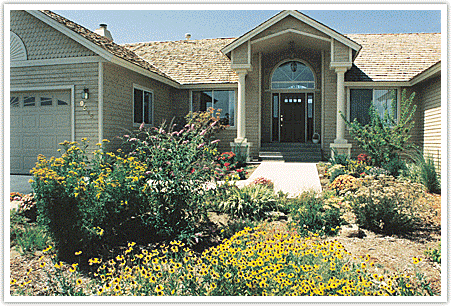Evaluate Your Landscape and Options

Return to Landscape Guide Main Page
Take photos of yards that appeal to you or clip pictures from magazines.
Consider the future. Although shrubs, plants and especially trees may look small when first planted, they will eventually grow to mature size. Allow for proper spacing between and above them and choose plants according to the space you have.
Hint: Look for plants or trees that are either slow or fast growing, depending on your need and what you want to accomplish.
Choose plants based on bloom time to ensure continuous color in your yard.
Choose ground covers best suited to the location. Ground covers are great in shady areas, low spots and on slopes to provide color and texture, prevent erosion and conserve water. If you are considering ground covers, ask yourself the following questions:
- Will there be foot traffic? Avoid succulent or fragile plants in these areas.
- Are other plants growing within the area? Check how tall your ground cover will grow to avoid blocking other plants.
- Are there roots or valves that you want the ground cover to hide?
- Do seasonal conditions vary? Full sun in spring when trees are bare; shade when trees have leafed out.
- How fast will the area need to be covered? For example, vines are fast growing but cannot handle foot traffic. Another example, thyme is durable, but is slow to fill in.
- What are the water requirements of other plants in the area? Will all plants be on the same watering schedule? Will the ground cover need a separate station on the irrigation system due to different water needs?
Search for Plants, Trees and Ground Covers Here
ALSO: Consider your fire hazard environment. Much of northern Nevada is considered a high fire hazard environment. Our region possesses the right kind of weather, vegetation and topography to support wildfire. Since weather and topography cannot be altered, the best opportunity to reduce fire hazard lies in changing the characteristics of fire fuel. More

